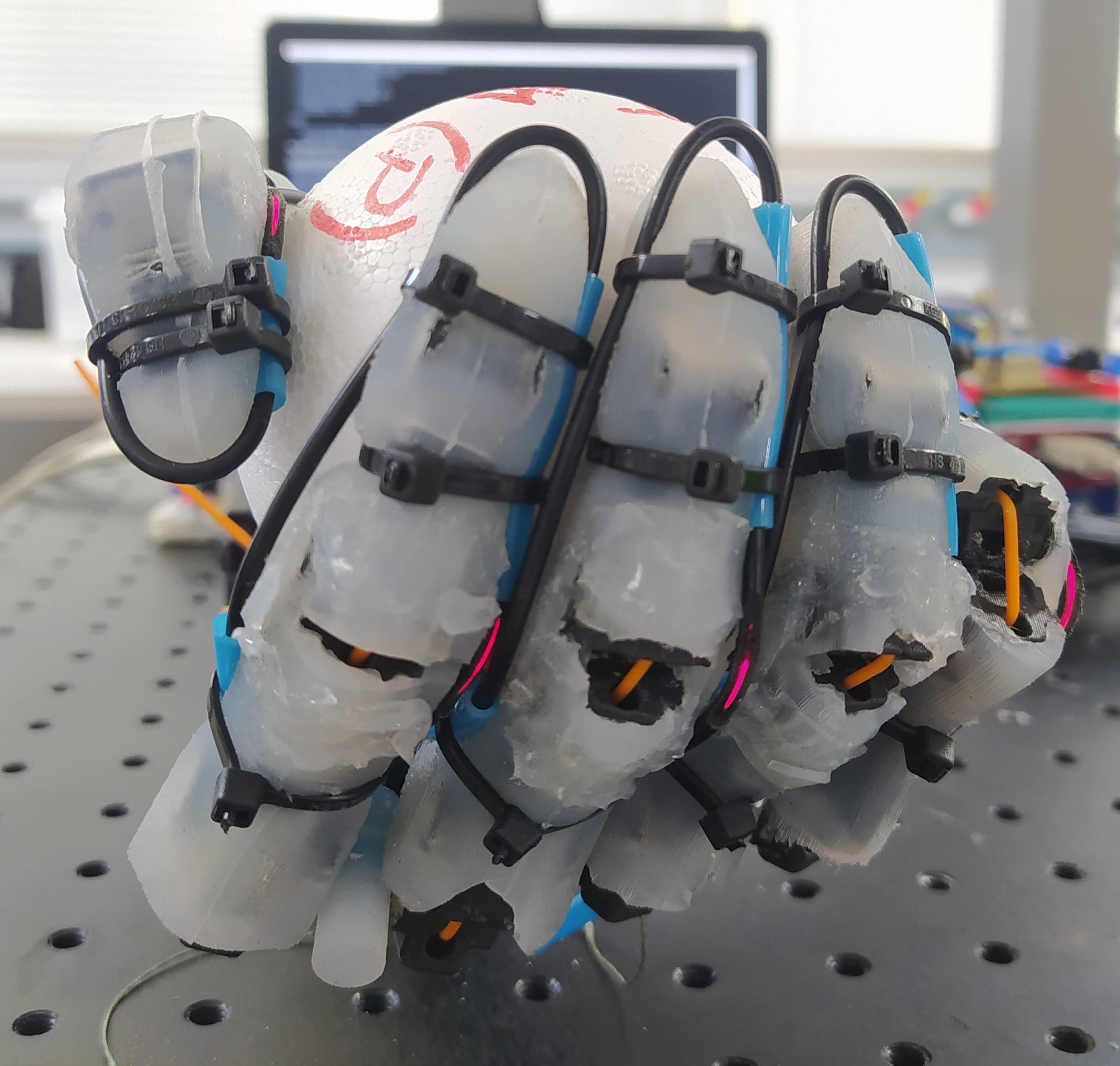
Research in partnership with LabTel designs a robotic hand
- Post by: Isabela Xavier
- 21/07/2023
- No Comment
By: Ghenis Carlos Silva*
The Ufes Telecommunications Laboratory (LabTel) in partnership with the Espírito Santo Research, Innovation and Development Center (CPID) is developing a robotic hand prosthesis. Named PrHand, the device has sensors that apply rigid and flexible elements, enabling its adaptation according to the shape of the object it handles. The project is another one from LabTel’s social robotics area.
The demand for a prosthesis that includes efficiency and accessibility is great. With that in mind, the researchers were able to produce a hand that looks and moves like a natural limb.
Its elastic joints allow the extension of the fingers and the flexion is done with a motor. Finger movements are flexion (bending), extension (stretching), abduction (moving away from the medial plane of the hand), and adduction (closing in relation to the medial plane of the hand).
Cost
The professor of the Graduate Program in Electrical Engineering at Ufes (PPGEE) and researcher at LabTel, Camilo Díaz, details the accessibility of the project.
“As the parts are made with a 3D printer, the product becomes low cost and can be replicated by anyone who has a 3D printer. Generating a greater social impact, especially for the less favored population, ”he declares.
The technology applied in the robotic prosthesis consists of electropneumatics, in which an electric motor flexes the fingers, and an air pump pressurizes pneumatic actuators located between them, allowing the abduction movement.
On the market, a hand prosthesis that enables the same performance can reach the value of US$ 50,000 (R$ 238,000). The estimated cost of producing PrHand is US$ 600 (about R$ 2,800).
Performance
The PPGEE doctoral student and researcher responsible for the prosthesis, Laura Barraza, says that the next step is to improve the prosthesis’ performance in relation to weight and transform it into a more commercial product.
“With the mechanical tests, it was possible to characterize the prosthesis in relation to the weight it can carry without being damaged, registering approximately 10 kilos. Regarding the maximum force it applies to objects, we registered approximately 35.8 Newtons”, explained Barraza.
The student added that the first tests were important to diagnose the operation of the equipment.
“Some functional tests were also carried out, including to assess how naturally an amputee would be able to carry out daily tasks with the prosthesis. In general, the results were better compared to the prostheses reported in the literature”, declares Barraza.
Next step
Attributing sensitivity to the prosthesis makes up the next stage of the study. This will occur with the application of fiber optic pressure and curvature sensors, with which it is intended to improve flexibility and obtain information.
Thus, the person using the prosthesis will be able to understand if he is holding a hot object, if he is slipping or if he is squeezing more than he needs to. “We need this information, and we will place pressure and curvature sensors to find out how the hand behaves when it is interacting with an object”, explains Díaz.
The research started in Colombia, where some mechanical and functional tests were also carried out.
The project had the scientific contribution of professors from LabTel, from the Research, Innovation and Development Center of Espírito Santo and from the University of Bristol, in England. Funding is provided by the Espírito Santo Research and Innovation Support Foundation (Fapes) and the National Council for Scientific and Technological Development (CNPq).

*Scholarship holder at the Telecommunications Laboratory
